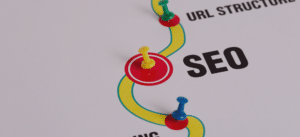Practical Tips to Boost Your Website's Speed
Let’s be real: we’ve all clicked on a website, only to sit there staring at a loading wheel, wondering if it’s worth the wait. Frustrating, right? Now imagine your customers feeling that way about your website.
Here’s the thing: website speed isn’t just a nice-to-have—it’s a must-have. It’s the difference between a visitor exploring your site or bouncing to a competitor. And you know what? It’s not just about keeping people happy. A fast website can improve your SEO rankings, boost conversions, and even make your business look more professional.
For small businesses, optimizing website speed and performance is one of the smartest moves you can make. In this guide, we’re diving into practical tips and strategies to help you create a lightning-fast website that delivers an exceptional user experience.
Key Takeaways:
- Website speed is critical for enhancing user experience, improving SEO rankings, and increasing conversions.
- Optimizing images, enabling caching, and reducing unnecessary scripts are essential for faster loading times.
- Advanced techniques like lazy loading, script deferral, and lightweight coding can further improve performance.
- Regular testing and monitoring ensure your website stays fast and efficient over time.
1. Why Website Speed and Performance Matter
Website speed is a big deal because it directly impacts user experience, SEO rankings, and conversions. Think about it: when you visit a slow website, how long do you stick around? Probably not very long. Research shows that 53% of users will abandon a site if it takes more than 3 seconds to load. That’s barely enough time to sip your coffee! A fast website keeps users engaged, reduces bounce rates, and encourages them to explore further.
From an SEO perspective, Google has made it clear—website speed is a ranking factor. If your site is slow, you’re not just frustrating users; you’re also hurting your chances of showing up in search results. On the other hand, a speedy site can improve your visibility and drive more organic traffic.
And when it comes to conversions, every second counts. A 1-second delay in page load time can reduce conversions by 7%. For small businesses, that could mean fewer sales, fewer leads, and fewer opportunities to grow. A fast website doesn’t just attract visitors—it turns them into customers.
2. Actionable Tips to Improve Website Speed
Improving your website’s speed starts with optimizing your images. Large, uncompressed images are one of the biggest culprits of slow websites. By using tools like TinyPNG or ImageOptim to compress your images, you can significantly reduce their file size without sacrificing quality. If you want to go a step further, consider using next-gen formats like WebP, which are designed to load faster while maintaining high visual fidelity.
Enabling caching is another crucial step. Think of caching as giving your website a memory. It stores copies of your site’s files on a user’s device, so the next time they visit, it loads much faster. Plugins like WP Rocket or server-side caching solutions can make this process seamless.
Reducing HTTP requests is another effective way to boost speed. Every element on your webpage—images, scripts, stylesheets—requires an HTTP request, and the more requests there are, the slower your site becomes. By combining files, using CSS sprites, and eliminating unnecessary elements, you can minimize these requests and improve load times.
Lazy loading is a game-changer for media-heavy websites. This technique delays the loading of images and videos until they are visible on the user’s screen. Not only does this improve initial load times, but it also makes your site feel more responsive and user-friendly.
Enabling Gzip compression is another powerful way to improve performance. Gzip reduces the size of your website’s files, making them faster to load. Most hosting providers offer this feature, so be sure it’s enabled for your site.
Finally, auditing your plugins and scripts can have a significant impact. Over time, websites tend to accumulate unnecessary plugins, tracking codes, and scripts that slow them down. Regularly reviewing your site and removing anything non-essential can help keep your website running smoothly.
A fast website isn’t just a luxury—it’s a necessity for creating a great user experience and staying competitive in today’s digital world."

3. Advanced Website Optimization Techniques
Once you’ve implemented the basics, you can take your website performance to the next level with advanced techniques. Script deferral, for example, delays the loading of non-essential scripts until after the main content has loaded. This ensures that users can see and interact with your site as quickly as possible.
Critical CSS is another technique worth exploring. It involves loading only the CSS needed for above-the-fold content and deferring the rest. This approach ensures that users see the most important parts of your site immediately, improving perceived load times.
Database optimization is often overlooked but incredibly effective. Over time, your database can become cluttered with unnecessary data like old revisions, spam comments, and unused tables. Cleaning it up not only improves your site’s performance but also reduces its overall size.
Finally, DNS prefetching is a small but impactful optimization. By preloading DNS queries, you can reduce the time it takes to resolve domain names, making your site feel faster for users.
4. Common Website Speed Mistakes to Avoid
Even with the best intentions, it’s easy to make mistakes that can hurt your website’s performance. One common pitfall is overloading your pages with too many elements, plugins, or scripts. While it’s tempting to add every feature imaginable, simplicity is key. A streamlined site is not only faster but also easier to navigate.
Another mistake is neglecting mobile optimization. With most web traffic now coming from mobile devices, a slow mobile site can drive users away. Always test your site on various devices and ensure it performs well across the board.
Skipping regular testing is another issue. Website performance can degrade over time due to updates, new content, or external factors. Tools like Google PageSpeed Insights or GTmetrix can help you monitor your site and catch issues early.
Lastly, don’t underestimate the impact of hosting. Choosing a cheap, low-quality hosting provider might save you money upfront, but it can cost you in lost traffic and conversions. Invest in a reliable hosting provider with solid-state drives (SSDs) and dedicated resources for the best results.
5. Monitoring and Maintaining Website Speed
Improving your website’s speed isn’t a one-time task. It requires ongoing monitoring and maintenance to keep things running smoothly. Speed testing tools like Google PageSpeed Insights, GTmetrix, and Pingdom are invaluable for identifying performance issues and tracking improvements over time.
Regular updates are also crucial. Keeping your CMS, plugins, and themes up to date ensures optimal performance and security. Additionally, make it a habit to audit your site for unnecessary elements, outdated scripts, or bloated code. By staying proactive, you can ensure your website remains fast, efficient, and user-friendly.
Learn more about building an effective website by exploring our guide on Web Design Essentials for Small Businesses.
We Build Cool
Success Stories
365 Data Centers
Discover how we rapidly rebuilt and optimized a 30-page website for 365 Data Centers, restoring their online presence and managing digital ad campaigns across key regions to drive engagement and growth.
XTECH Football Pads
Discover how we transformed XTECH Football Pads‘ digital presence, boosting their online sales and tripling website traffic through innovative website development and user experience enhancements.
BeEarth Foundation
Discover how we partnered with the BeEarth Foundation to develop a website that aligns with their mission of sustainability and global engagement. Our work has significantly increased their online visibility and engagement, supporting their efforts to promote sustainable development.
We Recycle Solar
Learn how we illuminated digital success for We Recycle Solar by completely redesigning their website to reflect their leadership in the growing solar recycling industry and implementing strategic digital advertising campaigns that enhanced their visibility at key industry events.
Preferred Home Health Care & Nursing Services
Explore how we elevated the digital presence of Preferred Home Health Care & Nursing Services by enhancing their website for better lead generation, building a dedicated site for staff recognition, and optimizing SEO for their location pages.
What Our Clients Say: Elevating Online Success
FAQs:
Answer: Website speed is a ranking factor for Google. Faster sites provide a better user experience, which can lead to higher rankings and more organic traffic.
Answer: Lazy loading delays the loading of images or videos until they’re visible on the user’s screen, reducing initial load times and improving performance.
Answer: Small businesses can optimize speed by compressing images, enabling caching, reducing scripts, and using a content delivery network (CDN).
Answer: Tools like Google PageSpeed Insights, GTmetrix, and Pingdom are great for identifying and fixing performance issues.
Answer: Yes, high-quality hosting with dedicated resources and SSDs can significantly improve your website’s speed and reliability.
Final Thoughts:
At the end of the day, your website’s speed and performance can make or break your online presence. A fast, efficient site keeps users happy, improves your SEO rankings, and drives more conversions.
For small businesses, these optimizations don’t have to be overwhelming. By following the tips in this guide, you can create a website that’s not only fast but also delivers an exceptional user experience.
At Sublyme Digital, we specialize in optimizing websites for speed and performance. Whether you’re starting from scratch or looking to improve your existing site, we’re here to help.
Let's Build Something Sublyme
Let us help you create a fast, high-performing website that keeps users engaged. Contact Sublyme Digital today to get started.



